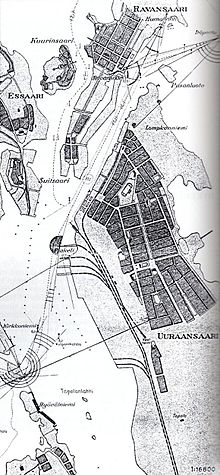- Maly Vysotsky Island
-
Maly Vysotsky (Russian: Малый Высоцкий, Finnish: Ravansaari) is an island in northwest Russia, currently leased to Finland. It is located in Vyborg Bay, next to Vysotsk, 12 km southwest of Vyborg.
Between 1918 and 1940, the island was a part of Finnish territory, and was called Ravansaari. It was inhabited by nearly one thousand Finns, who earned their livelihood mainly from the timber industry.[citation needed] During World War II, in 1940, it was annexed by the Soviet Union (along with the surrounding territory) and became a part of the Karelo-Finnish SSR. In 1941, it was recaptured by Finnish troops and returned to Finland. In June 1944, the island fell to the Red Army, and once again became part of the Soviet Union. The island was renamed Maly Vysotsky. A treaty was signed in 1963 to lease the island and the nearby Saimaa Canal to Finland for fifty years.
Because of the treaty and the island's isolation from both Finland and Russia, radio amateurs have made the Maly Vysotsky island an entity of its own, much like Hawaii or Alaska. This and the fact that Alexander Stepanovich Popov did his first radio experiments in the area at the turn of the 20th century makes the island an attractive destination for DX-peditioners. All such expeditions are organized by a Finnish-Russian group, the first of which occurred in 1988. Under the new treaty signed by Finnish and Russian governments in 2010, the island will be managed by Russian authorities.
Coordinates: 60°38′22″N 28°33′58″E / 60.63944°N 28.56611°E

This Leningrad Oblast location article is a stub. You can help Wikipedia by expanding it.

